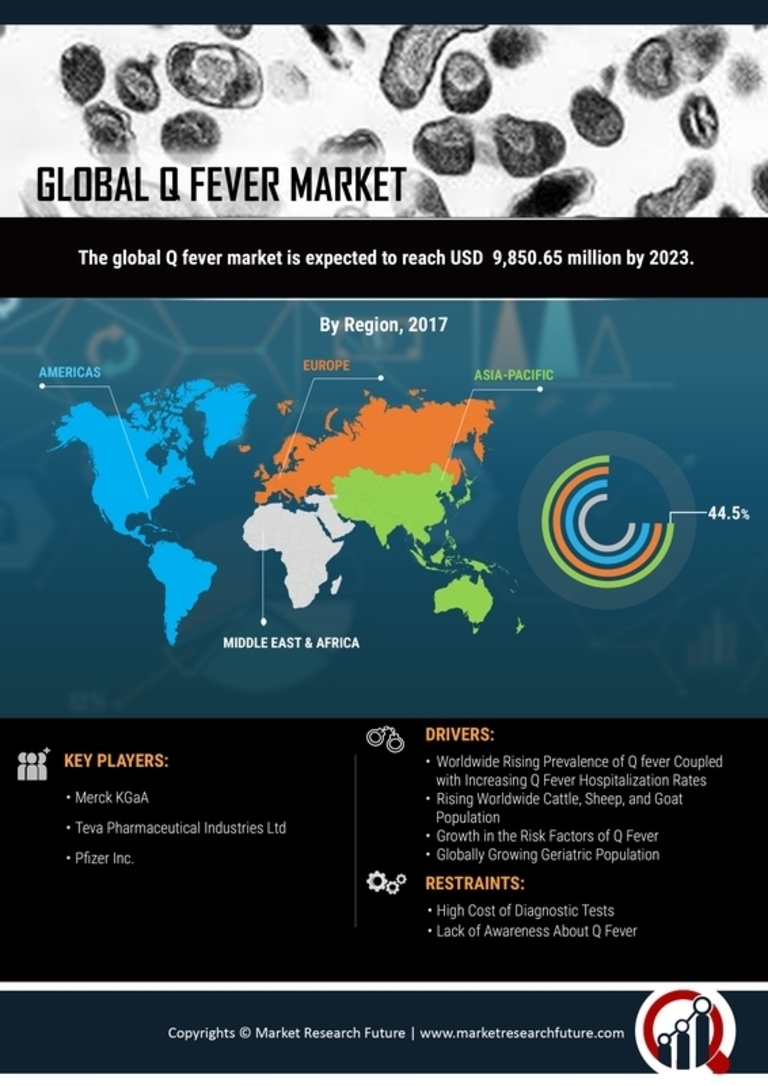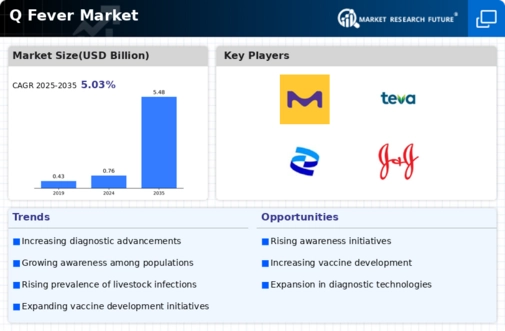Market Growth Projections
The Global Q Fever Market Industry is poised for substantial growth, with projections indicating a rise from 0.76 USD Billion in 2024 to 5.48 USD Billion by 2035. This remarkable increase reflects a compound annual growth rate of 19.67% from 2025 to 2035. The anticipated growth is driven by various factors, including rising incidence rates, advancements in diagnostic technologies, and increased government initiatives. As the market evolves, stakeholders must remain vigilant in addressing emerging challenges and opportunities within the industry. The growth trajectory suggests a robust future for the Global Q Fever Market Industry, emphasizing the need for continued investment and innovation.
Rising Incidence of Q Fever
The Global Q Fever Market Industry is experiencing growth due to the increasing incidence of Q Fever, a zoonotic disease caused by Coxiella burnetii. Reports indicate that the disease is prevalent in livestock, particularly sheep and goats, which serve as primary reservoirs. As awareness of Q Fever rises, healthcare systems are compelled to enhance surveillance and diagnostic capabilities. This trend is likely to drive market expansion, with the industry projected to reach 0.76 USD Billion in 2024. The growing number of reported cases necessitates improved public health responses, thereby fostering investment in research and development within the Global Q Fever Market Industry.
Growing Awareness and Education
The Global Q Fever Market Industry is benefitting from heightened awareness and educational campaigns regarding the disease. Public health organizations are actively disseminating information about the transmission, symptoms, and prevention of Q Fever. This increased awareness leads to better reporting of cases and encourages individuals to seek medical attention promptly. As educational initiatives expand, the market is likely to see a rise in demand for diagnostic and therapeutic solutions. The emphasis on community engagement and education is crucial for controlling outbreaks and fostering a more informed public, thereby contributing to the overall growth of the Global Q Fever Market Industry.
Increased Government Initiatives
Government initiatives aimed at controlling zoonotic diseases are pivotal for the Global Q Fever Market Industry. Various countries are implementing vaccination programs for livestock and enhancing biosecurity measures to mitigate the spread of Q Fever. These initiatives not only protect public health but also support the agricultural sector by reducing economic losses associated with outbreaks. The proactive stance of governments is likely to stimulate market growth, as funding for research and public health campaigns increases. This collaborative effort between public health authorities and agricultural sectors is expected to bolster the Global Q Fever Market Industry, creating a more resilient framework for disease management.
Global Trade and Livestock Movement
The dynamics of global trade and livestock movement significantly impact the Global Q Fever Market Industry. As international trade in livestock increases, the risk of Q Fever transmission also rises, necessitating enhanced monitoring and control measures. Countries are implementing stricter regulations and health checks at borders to prevent the spread of the disease. This regulatory environment is likely to drive demand for diagnostic tools and vaccines, further propelling market growth. The interconnectedness of global livestock markets underscores the importance of a coordinated response to Q Fever, which is expected to shape the future landscape of the Global Q Fever Market Industry.
Advancements in Diagnostic Technologies
Technological advancements in diagnostic methods are significantly influencing the Global Q Fever Market Industry. The development of rapid and accurate diagnostic tests, such as serological assays and PCR techniques, facilitates early detection of Q Fever. These innovations not only improve patient outcomes but also enhance epidemiological tracking of the disease. As healthcare providers increasingly adopt these technologies, the market is expected to grow substantially. The anticipated growth trajectory suggests that the industry could reach 5.48 USD Billion by 2035, reflecting a compound annual growth rate of 19.67% from 2025 to 2035. This trend underscores the importance of technological integration in addressing public health challenges.















Leave a Comment